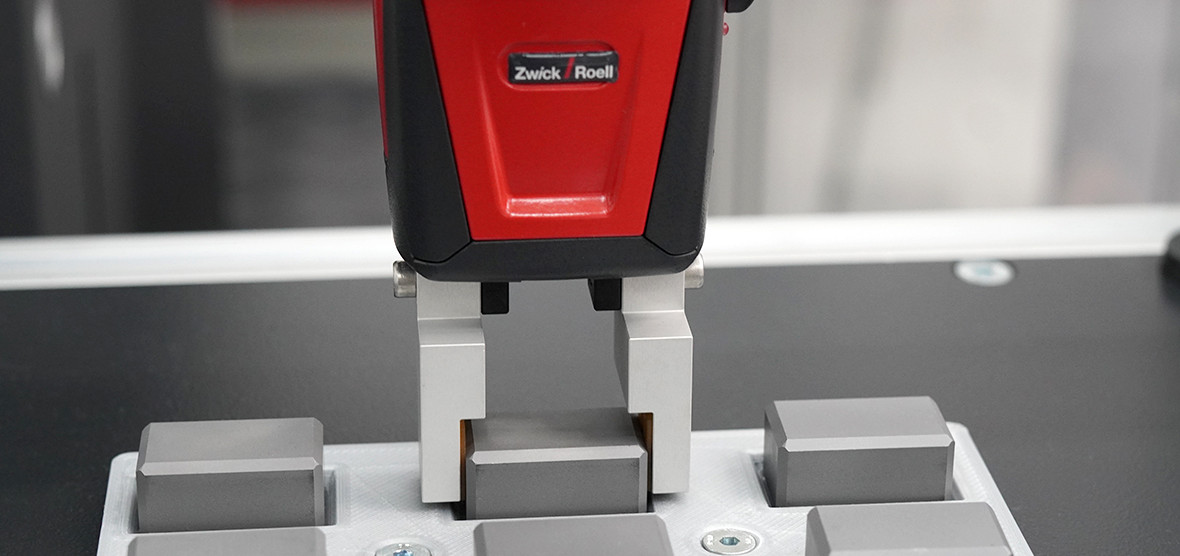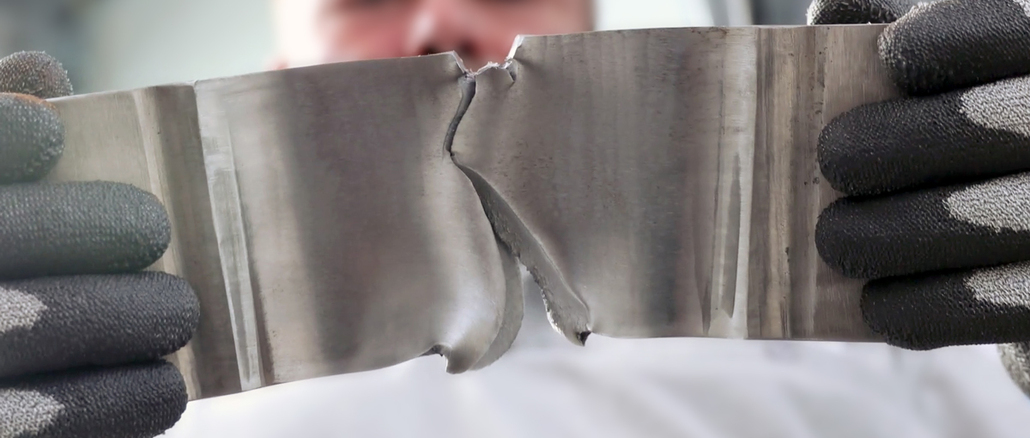
Impact testing is one of the classics of destructive materials testing and provides fundamental information for material characterization. Drop-weight tests are used to collect data on ferritic steels commonly used for oil and gas pipelines. To this end, ZwickRoell has designed one of the largest drop units in the world.
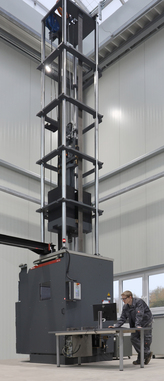
© ZwickRoell
Pipelines are used to transport oil and gas over long distances. Depending on the volumes to be transported, large pipe diameters and wall thicknesses are required to withstand the internal pressure and ensure safe operation with as few leaks as possible.
Since a rupture in the pipeline not only results in delivery failures, but also regularly leads to environmental disasters in the case of oil, for example, great importance is attached to safety and thus to meticulously tested materials. In addition to internal pressure and weight of the conveyed substance, external factors must also be considered. Thus, thousands of kilometers of pipelines are exposed to inhospitable conditions, as in Alaska or Siberia. Therefore, the steels used must not become brittle even under low temperatures. Pipelines also operate under temperature fluctuations; the pipes elongate in summer and contract again in winter.
In view of the necessary wall thicknesses, tests on real pipe sections of large pipelines with classic pendulum impact testers or drop impact testers can only be carried out with reservations. Although it is possible to reshape a pipe segment flat, and cut a sample from the resulting sheet. But due to the machining and the other dimensions, the values can no longer be converted exactly to the real geometry. With ZwickRoell’s new DWT120kJ large drop weight tester, tests can be carried out on real, unmachined pipe sections, eliminating the need for conversions and estimates.
The DWT120kJ large drop unit
An overall height of around 9 meters, a mass of well over 10 tons and a resulting drop energy of up to 120,000 joules are the impressive key data of the new DWT (High Energy Drop Weight Tester) from ZwickRoell. The drop weight alone weighs three tons.
The three-story-tall testing machine is designed for drop-weight tests on ferritic steels, such as those used in oil and gas pipelines. The test procedure is described in the standards API-RP 5L3, DIN EN 10274 and ASTM-E 436, among others.
When dropped, the weight accelerates a standardized test specimen toward the specimen, which is penetrated or broken. Then four high-performance shock absorbers with compensating reservoirs safely absorb the weight. The type of fracture and the fracture structure are evaluated, from which statements can be made about the material properties. Thanks to the instrumented impact fin, additional data can be obtained from the experimental procedure. Characteristic force points as well as the absorbed impact energy can be calculated, the determination of fracture mechanical parameters allows an exact evaluation of the toughness.
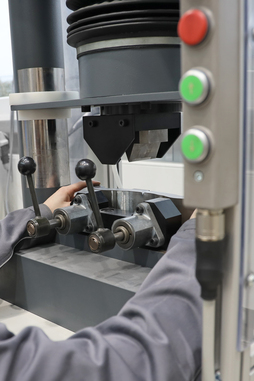
© ZwickRoell
120,000 joules
The Gövert testing laboratory in Essen has opted for a ZwickRoell type DWT120kJ drop impact tester, one of the most powerful drop impact testers in the world, for testing notched steel specimens from pipe cutouts. The instrumented large drop weight provides sufficient energy to safely crush even massive specimens and additionally offers the possibility to record complete force-displacement diagrams. From these, both characteristic force points and the absorbed impact energy can be calculated. This provides more comprehensive information about the material properties than can be obtained by simply examining the fracture behavior and fracture structure.
To ensure that the loaded area of the specimen remains unmachined and thus to exclude any influence on the measurement results, the tube section is brought into gull-wing shape. Here, the original curvature at the notch and test point remains unchanged. The specimen is then notched on a ZwickRoell 800 kN notching press. This approach, in conjunction with the instrumented large drop unit and ZwickRoell’s testing software, ensures reliable test results that can be verified with a test certificate based on DAkkS.
Fast and safe testing
A controlled low-temperature cooling unit permits precise temperature control of the specimens; specimen feeding (just like tool loading) takes place pneumatically from outside the test chamber. On the one hand, this allows the samples to be fed and crushed within the time required by the standard; on the other hand, the spatial separation contributes significantly to the safety concept of the plant. The test chamber is electrically and mechanically secured, the test is only performed after all safety contacts have been interrogated – an electronically monitored and pneumatically actuated safety latch prevents access while a test is in progress.
The drop weight divided into individual weights – which is checked electronically – and the infinitely adjustable drop height make it easy to create different standard-compliant test conditions. The system is operated via a touchscreen that provides up-to-date information on drop height, drop energy, drop weight and drop speed at all times.
The display of important data on the drop weight itself supports the situational awareness of the operating personnel and, in conjunction with the intuitively designed TestXpert III testing software, promotes the acquisition of reliable test results. Test data can be recorded in TestXpert III in a tamper-proof and traceable manner. In addition to the test results, the protocols also contain all test parameters as well as information on the person or persons responsible for the test.
The test results of the large drop unit can be verified according to DAkkS, calibration is certified ex works and on site at the customer. The fulfillment of all safety requirements is also verifiable.
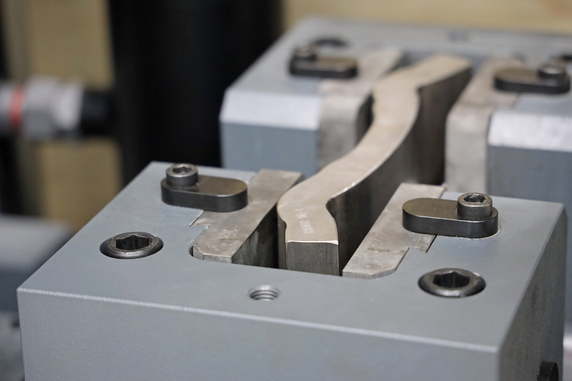
© ZwickRoell
Installation of the large waste plant
In view of the dimensions of size and weight as well as the energy expended, special importance is attached to the safe erection and installation of the halyard system. A structurally sound foundation is the prerequisite for accurate test results, safe operation of the drop weight unit and a long service life. For this reason, ZwickRoell includes a structural analysis plan of the foundation in the scope of delivery. The connection plate, which is also included, can be supplied in advance together with the anchor bolts and the grout if desired. This allows foundation work to be completed before delivery, facilitating rapid deployment of the large drop tower. Before the final handover, the large-scale waste plant is fully accepted, calibrated and certified at the customer’s site.

